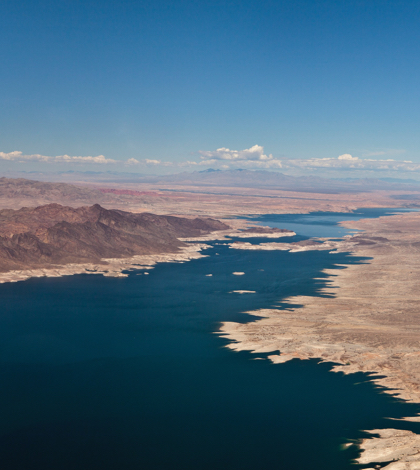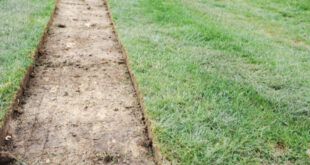Coordinated efforts by Arizona, California and Nevada have forestalled mandatory water restrictions at Lake Mead for another year. But, should the four-plus year drought continue in the western states the U. S. Bureau of Reclamation is projecting that by 2018 the lake’s levels could fall short by less than one foot thereby triggering water use restrictions.
Projections made in August of each year determine Lake Mead’s operations for the coming year. Reclamation anticipates that Lake Mead’s Jan. 1, 2017 water level to sit four feet higher than the trigger point of 1,075 feet above sea level.
But projections are also showing a shortage for Lake Mead in 2018, but this assumes an end to various conservation programs throughout the western states. A wet winter in the 2016-17 or further conservation will be key to averting water restrictions in 2018.
“It’s good to know we won’t be in shortage in 2017,” said Chuck Cullom. Colorado River programs chief for the Central Arizona Project (CAP). “We’re hopeful we can again avoid shortage in 2018.”
Various efforts have kept Lake Mead from dropping below the threshold of 1,075 feet.
Citing storage programs, water swaps and working together for years have been the combined efforts of water managers in California, Arizona and Nevada. The CAP has cut water supplies to the Phoenix area and three other suburban areas by supplementing their supply with water from the Salt River Project. CAP has also paid some $8 million over three years to farmers who have cut back on their water demands. Cullom applauds these efforts for raising Lake Mead by approximately five feet.
Pointing to the efforts by the states and Reclamation Warren Tenney, executive director of the Arizona Municipal Water Users Association, stated that they, “are working hard to complete a plan that protects the overall health of the Colorado Rivers and shores up Lake Mead.”
Rose Davis, spokeswoman for Reclamation, said the lake’s level is projected to be four feet above its shortage level was, in part, because agencies have been working together since 2014.
“The partners have all been tested and no one’s had it easy,” she said. “But they’re keeping to their agreements and continuing to talk.”
Should Lake Mead’s levels fall below 1,075 feet some 40 million Southwest residents would be impacted along with businesses, tribal groups and millions of farm acres throughout seven states. An interstate agreement struck in 1922 would allocate 15-million acre-feet of water to the Southwest states.
If restrictions were put in place Arizona and Nevada would be the first impacted. Arizona’s water would be cut 11.4 percent, Nevada would be cut by 4.3 percent, but California would be able to draw its full 4.4 million acre-feet of their allocation. However, California has been a partner to the on-going talks and actions of conservation; the drought impacted Golden State realizes the need for cooperative actions for the benefit of all.
However, Metropolitan Water District of Southern California’s Colorado River resources chief, William Hasencamp, thinks that a shortage declaration is inevitable.
“It’s not ‘if’ but ‘when,’” said Hasencamp. “The fact that we’re not in shortage now is a testament to what we’ve been doing.” Metropolitan serves some 19 million customers in Southern California.
Lind Stitzer, an Arizona water policy advisor with Western Resource Advocates, feels the efforts to shore up Lake Mead through the combined efforts of Arizona, California and Nevada are, in part, the benefit of cooperation.
She summed it up the best saying, “It’s paying off.”
 California Water News Daily Your Source For Water News in California
California Water News Daily Your Source For Water News in California


